To read part I of the series, click here: How C V Raman came to Bangalore
The house of Tatas had always hoped to have an Indian director for the institute one day, which was not very feasible in the colonised country. But the opportunity to economise on the weight carried by Raman’s international reputation, by his knighthood and the Nobel Prize, was quickly seized by the Tatas, and for the first time ever since its inception in 1909, an Indian was appointed as the director of IISc in 1933.
Many nationalists at that time harboured a feeling that the institute was merely serving the British interests, and had neither acted as a catalyst for industrial growth in the country nor had it made any scientific discovery that India could be proud of.
Raman, however, firmly believed that original research and advanced education are indispensable for the economic and intellectual growth of any country, and that it could be accomplished in India if the highest order of excellence could be inculcated in the institutions like IISc. Having set for himself this grand task, Raman seized the reins of the institution and took to radical reforms.
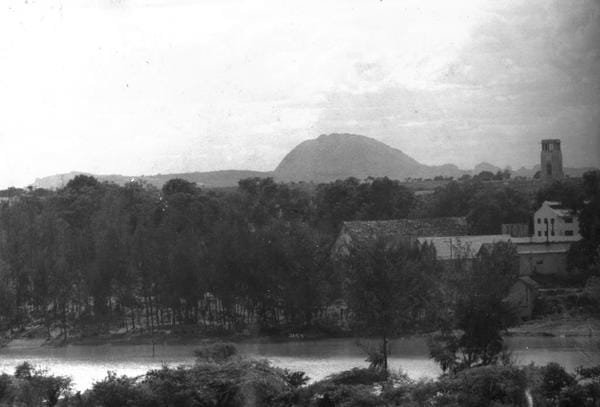
IISc, with Savandurga and Magadi hills in the background, as visible from near Sankey tank. Pic courtesy: Raman Research Institute
Reforms in the IISc campus
The allure of the scenic beauty of nature being the primary driving force behind his pursuit of science, the first step taken by the new Director was to beautify the campus by planting flowering trees and gardens, much of which sprawl over the IISc campus even today.
This was a time when many great Jewish scientists were fleeing from Nazi Germany. Raman, who was always opposed to young people going abroad to pursue higher studies, was quick to seize the opportunity to invite many of these scientists like Max Born and Schrodinger to India, offering them prestigious chairs he had created in the institution.
Schrodinger wrote back saying it was a bit too late for he had already accepted a position in Dublin, and that he regretted that he could not accept his offer and settle down in “the land of Upanishads.” Max Born arrived in Bengaluru.
Forming Indian Academy of Sciences was another achievement by C V Raman. Raman established this academy in 1934, when he was the director of IISc, “with the aim of promoting the progress and upholding the cause of science, in both pure and applied branches.”
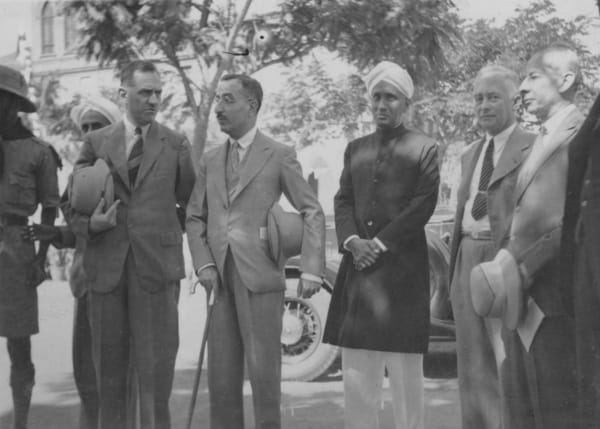
Sir C V Raman, with Sir Mirza Ismail (2nd from left) and Max Born (4th from left), during the inaugural of Indian Academy of Sciences. Pic courtesy: Raman Research Institute
Located within the Raman Research Institute premises in Malleshwaram, the Academy is now being controlled and funded by Department of Science and Technology, Government of India. Many distinguished scientists from India including Dr Kasturirangan and Prof C N R Rao have chaired the Academy. The Academy publishes many science journals and offers research fellowships to students and teachers of science.
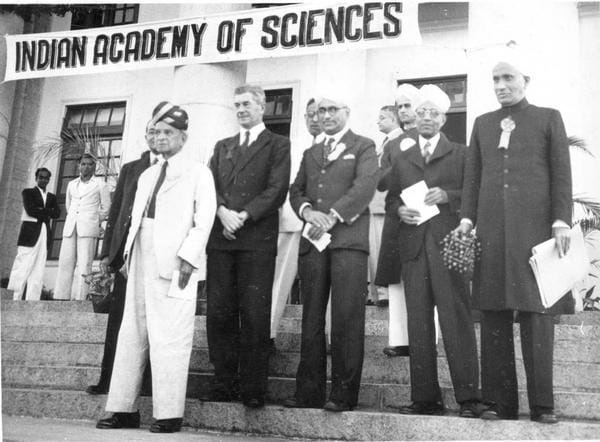
C V Raman along with eminent personalities, during Indian Academy of Sciences inaugural. Pic courtesy: Raman Research Institute
Like Born, Raman had many more scientists on his list, but before he could send invitations to them, the storm of resentment and envy which was quietly brewing all this while, ripped through the institution, turning all his plans upside down, and landing him in a controversy, the bitterness of which would never leave him for the rest of his life.
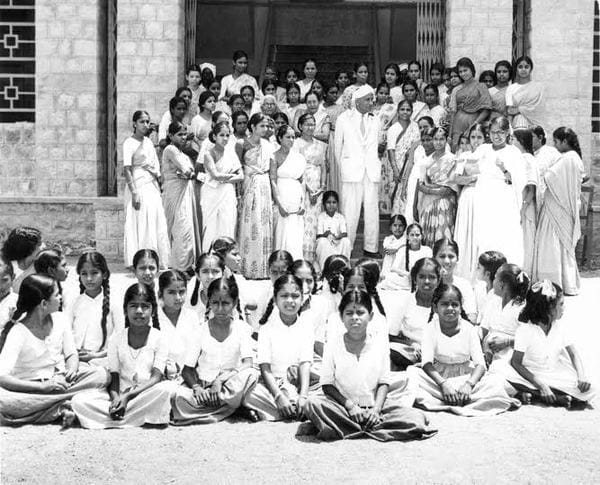
A rare photo of C V Raman. Pic courtesy: Raman Research Institute
Other scientists in the institution accused Raman of wasting funds on gardens, of appointing Dr. Born to a chair without consulting the governing body of the institution, of diverting too much funds towards research in theoretical physics at the cost of development of other departments of applied science and so on.
Many British professors at the institute were unhappy to work under an Indian. Prof. Watson of the Physical Chemistry department, who had served as the temporary director of the institution twice when the previous director was on leave, resigned from his professorship, stating Raman’s ‘ill-manners’ as the reason. In the midst of this turmoil, the council recommended the viceroy to set up a committee to review the affairs of the institution and submitted a panel of names for the committee.
Irvin report indicts Raman
The review committee which was set up by the viceroy as recommended did not contain any names that were submitted by the council. Instead Sir James Irvin was appointed as the head of the committee, with Dr. AH Mackenzie and Dr. SS Bhatnagar, who was then a professor of chemistry in Punjab University, as the other members. The 42-page-long Irvin Committee report began by analysing the objectives laid down by the founders and the contributors in the following statement:
“ The object of the institute shall be to establish chairs and lectureships in science and arts especially with the view to the promotion of original investigations in all branches of knowledge and their utilization for the benefit of India, and to provide and to assist in the provision of suitable libraries, laboratories and all necessary appliances.”
Then the report went on to speculate that what the late Tata meant by the phrase ‘for the benefit of India’ was that, “the activities of the institute should be devoted primarily to securing for India the material benefits expected to follow from the close association of scientific research with the industries of the country”. The report also modified the objectives laid accordingly to stress that, “the major part of the resources of the institute should be applied to those investigations which are likely to be of direct benefit to the industry of India”, and asserted that, “applied science does not receive the sympathetic support of the director”, who was channelising most of the funds for research in pure physics.
The report further accused Raman of not satisfactorily implementing the economic measures suggested to reduce the deficit in the institute’s budget. The Rs. 9,000, which was to be saved from expenditure on water supply by installation of tube wells, was used, on Raman’s recommendation, for creating a new chair of mathematical physics, which was offered to Max Born.
With regards to Dr. Born’s appointment, the report said that they were, “certain that the presence of an eminent mathematician such as Dr. Born would have stimulating effect on the activities of the Department of Physics”, and that they did not “fail to appreciate the desirability of adding to the strength of the institute men of reputation and calibre of Dr. Born. But under the present financial conditions it appears to us imprudent to add this new charge.”
“If great minds like Born and Schrodinger who were seeking a country to adopt had been provided with a home here,” said a disappointed Raman many years later to Prof. Ramasheshan, son of Raman’s younger sister and one of his closest students, “a real scientific movement could perhaps have started in this country”, making it possible for young Indians to pursue excellent higher education without having to go abroad for it. “What a great setback it was for our science”, remarks Ramasheshan, “especially when one recalls the tremendous advantage gained by America from immigrant scientists!”
Max Born, in one of his letters to Rutherford, wrote:
“Raman came to the Institute with the idea of making it a centre of science of international standard. What he found was a quiet sleepy place where little work was done by a number of well-paid people… Raman’s mere speeding up of the entire pace at the Institute was bound to look like criticism on the former work. Add to this that he made a heavy mistake in not waiting for a year or two before starting actual reforms… I know that Raman’s manners can cause serious grievances but in Watson’s case they were but a pretext…
The English group resented an Indian Director, who, as a political principle, was wanted and pushed through by the powerful Tata group. The Tatas knew quite well that by appointing Raman, they offended Watson who could have been the successor of Sir Martin Forster (the previous director). But Watson’s resignation was too strong a protest addressed to the Tatas, who had to get out of this difficult situation by dropping Raman. “But the Tatas will preserve a sense of defeat which one day will burst out again,” says Ramaseshan.
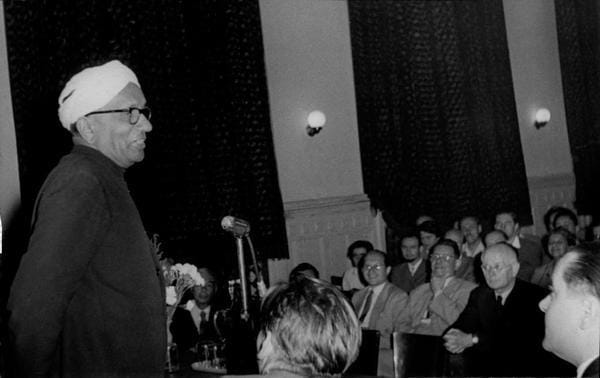
C V Raman addressing a group of scientists. Pic courtesy: Raman Research Institute
He adds, referring to the Irvin committee, that he was rather surprised that, “Instead of visiting the Institute and carefully studying the work done in the laboratories, they settled in a Government building some four miles away, where they behaved like a law court. It was evident to me from the beginning that they had received instructions beforehand.” They examined chiefly Raman’s opponents, while suppressing the accounts given by Prof. Venkatesachar – who though admitted Raman’s lack of tact and administrative gifts, had highlighted good things about Raman, recalls Ramaseshan.
According to Ramseshan, the Tatas and the Bengali members of the council had made up their minds to get rid of Raman, and the Irvin committee listened to them. “What I am sincerely sorry for is the fate of all the young students of the Institute. The clever boys are very devoted to Raman, for he is most interested in their progress and asks very much of them,” mentions Ramseshan.
Raman resigns from directorship
In the subsequent meetings following the Irvin committee report, a strong sense of disapproval was expressed by many council members and measures were proposed to curb the powers of the director. After this long bitter row, the Nobel Laureate whose ego was hurt and insulted by the very presence of such politics in the endeavour of science, resigned from the post of the director and continued till 1948 as a professor of Physics.
G Venkataraman, who examines the report and the correspondence between Born and Rutherford in great detail in his biography of Raman titled, ‘Journey into Light’, wrote, “Viewing the sordid events half a century later, one perceives something more than mere intrigue, rivalry and petty jealousies. One sees a struggle between forces impatient for progress on one hand, and vested interests threatened by that progress on the other. How often has this drama been re-enacted, though in slightly different terms! Raman lost the battle not only for himself but for excellence as well.”
The very next morning after laying down his directorship, Raman was in laboratory at 7 am just like every other day, asking his students about the progress of their work in his regular loud “booming” voice. “Was it mere outward bravado?” asks Venkataraman. “We do not know. There can be no question that Raman was lion-hearted but it is also more than possible that deep inside he was very much shaken. He was never again the same man, increasingly prone to cloudy judgement where both persons and scientific matters were concerned.”
Raman enters Panchavati
Nonetheless under his professorship, the Department of Physics in the institute became one of the most active centres, pursuing research in a variety of fields ranging from ultrasonics, Brillouin scattering and X-ray scattering to physics of diamond and lattice dynamics, apart from the regular programme of studying light-scattering and various aspects of Raman effects. A large number of young students trained here by Raman, later went on to become renowned physicists on their own right.
Finding himself to be in not very good terms with many of his colleagues, Raman decided to find a separate accommodation for himself close to the institute. He laid his eyes on an old bungalow in Malleshwaram just three kilometres from the institute, fully fledged with a garden, wooded with neem, jack fruit, mango and many other trees. Rumoured to be haunted, the house did not have many interested buyers, and Raman bought it at a bargain price, remarking that he, being a greater ghost than the one residing in the house, would drive it away. This is the bungalow Panchavati, located between 8th and 10th mains on Malleshwaram 15th cross.
It was around this time when Raman’s long standing relationship with Max Born ended in a bitter controversy over the lattice dynamics. Raman was convinced that his approach was the right one, though, as it turned out later, he was wrong about it. This made him, “highly emotional and irrational when it came to lattice dynamics… and he got side-tracked into an area which was not his forte”, says A Jayaram, one of the first few research assistants hired at Raman Institute, in his memoirs about Raman.
Nonetheless, Raman and his students at IISc made many groundbreaking contributions in conical refraction, optical activity and may other crystal optical phenomena.
References:
- C. V. Raman : A Biography by Uma Parameswaran
- C. V. Raman – A Memoir by A. Jayaram
- Journey into Light by G. Venkataraman
- C.V. Raman – A Pictorial Biography By Prof. Ramasheshan
- Conversations of the reporter with Mrs. Ramasheshan
For part III, click here.
Related Articles
The editing leaves much to be desired. Spellings like “endeavor” and “rumored” are American, and don’t sit well with the rest of the article, which seems to otherwise be following British spellings.
‘@Procheta, thanks for pointing out the errors in spelling. They have been resolved.